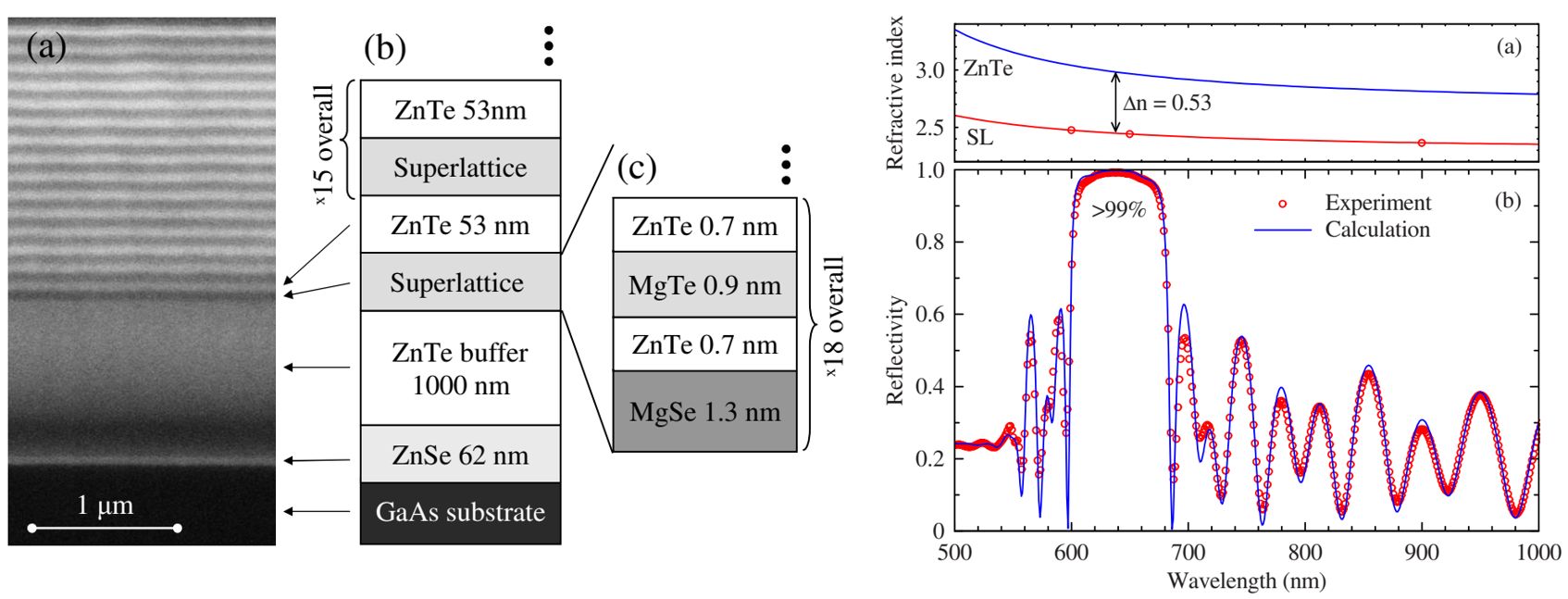|
A Distributed Bragg Reflector (DBR) is a layered structure composed of alternating low and high refractive index materials. It induces very high reflectivity due to constructive interference. A good epitaxial DBR should be made of alternating materials with identical crystal structures and lattice parameters. Moreover, the materials should be transparent in the spectral range of interest, and typically one of them should be a good barrier material for quantum nanostructures. Therefore, DBRs should be designed specifically for each material system and each quantum structure.
"Bragg mirror with superlattice for compensation of lattice mismatch", C. Kruse,W. Pacuski, D. Hommel, Patent claim at European Patent Office, EP 2211431 A1 (2009). Such DBRs we were growing also when we started MBE lab at UW:
However, we needed also DBRs for fitting to QWs CdMnTe/CdMgTe, therefore lattice matched to MgTe:
Finally, we checked also a very simple DBR made of only binary compounds CdSe and ZnTe:
Further, our novel structures are used for growth of microcavities composed of 2 or 3 DBRs, and containing various quantum structures inside. Microcavities with QWs we typically design to study and exploit polaritons. Microcavities with QDs we typically design to enhance or suppress PL, and to study individual objects like QDs or single dopants in QDs. This often require further structuring e.g. etching micropillars (see buttons with next systems). |




